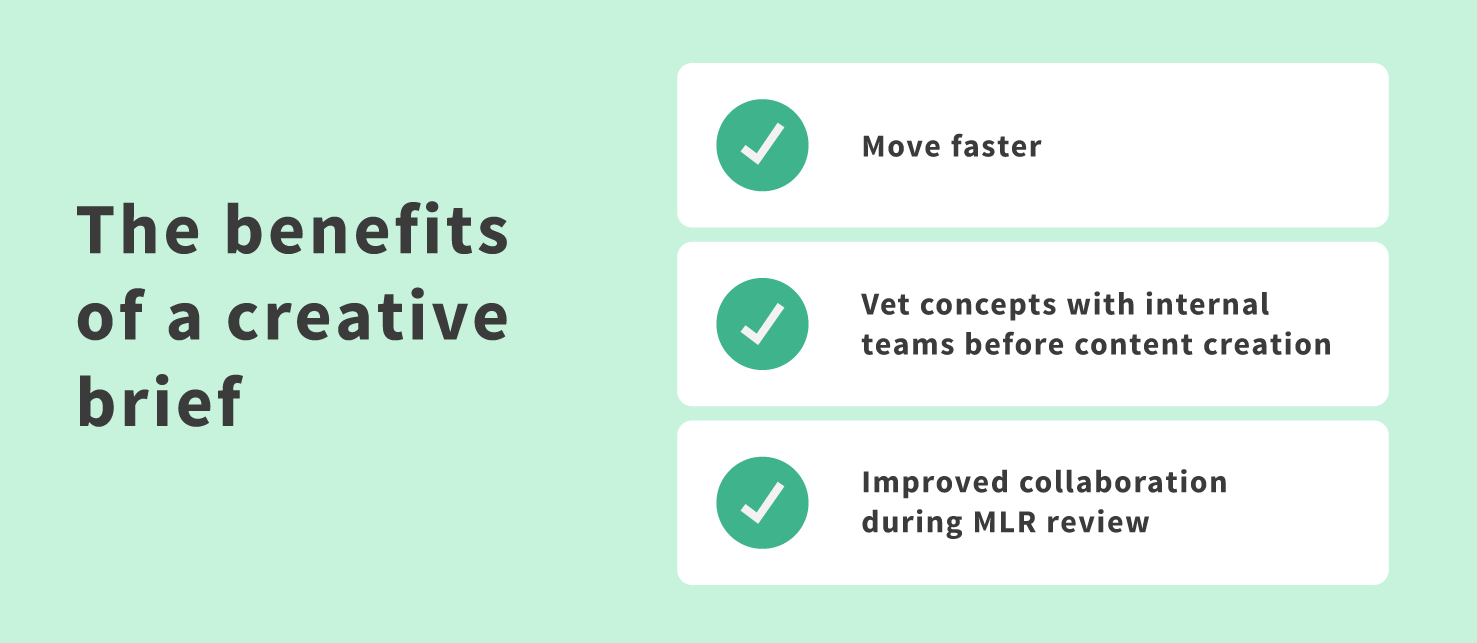That’s where creative briefs come in.
A creative brief is a document that clearly spells out the expectations, the focus of, and the intent behind any piece of content–written or visual–that a marketing team creates. The creative brief acts as a framework to align your content perfectly with your broader business goals, capture your brand voice in each piece of messaging–and do it all on a tight schedule. Creative briefs are useful not just for content creators, but for the whole life science marketing team.
Creative briefs take many shapes and forms. What you include in your creative brief should reflect your unique organization and marketing initiatives. However, there are essential components in every top-notch creative brief, specifically catering to life sciences:
Component 1: Type of content and intended use/distribution plan
Create clarity and alignment cross-functionally by outlining the format of the content and how it will be used. Document the content type (such as one-pager, blog post or sales slide) and how it will be used (digital, print, presentation), and other important details. By outlining as many of these details as possible, you will help your cross-functional teams understand the context behind the content and can help them during the MLR review process.
Component 2: Goals and objectives
Defining success and having benchmarks to quantify it is key to an ever-improving content strategy. Delineating performance objectives for the content, like unique visitors to the website or number of white paper downloads, will help the whole marketing team evaluate what’s working most effectively for future campaigns.
Component 3: Target audience
A clearly defined audience is fundamental to determining the appropriate tone, vocabulary, and point-of-view for a piece of content. Letting your creative know exactly who they’re communicating with in a given piece goes a huge way in letting them tailor it appropriately. The MLR review team can benefit from having this information easily at hand as well as it will help them understand what feedback is most appropriate.
Component 4: Design direction (if applicable)
Everyone who touches a piece of content should use the creative brief as their starting point, and that includes graphic designers–both in-house or external. Some images are appropriate for particular life science products that don’t work at all for others. For instance, people in a park on a sunny day may work for an allergy medication targeted toward the general public, but could strike the wrong note for a breathing apparatus. Letting your designers see the full intent and context behind the piece with the creative brief, and including very specific requests about mood, imagery, vetted logo, color palette and so on, smooths out the design process.
Component 5: Key messages
The strongest content strategies begin with clear, consistent messaging. The key messages section in your creative brief allow you to make sure that your content consistently gets across exactly what you need it to. In this section of the creative brief, you spell out major points – what the content is about–as well as terms, concepts, and phrases that need to be there for purposes of branding and compliance.
For some pieces of content, this part of the creative brief may be a point-for-point outline of what you’re looking for. For others, it might be more general. Either way, it should be clear about what the content is expected to get across.



